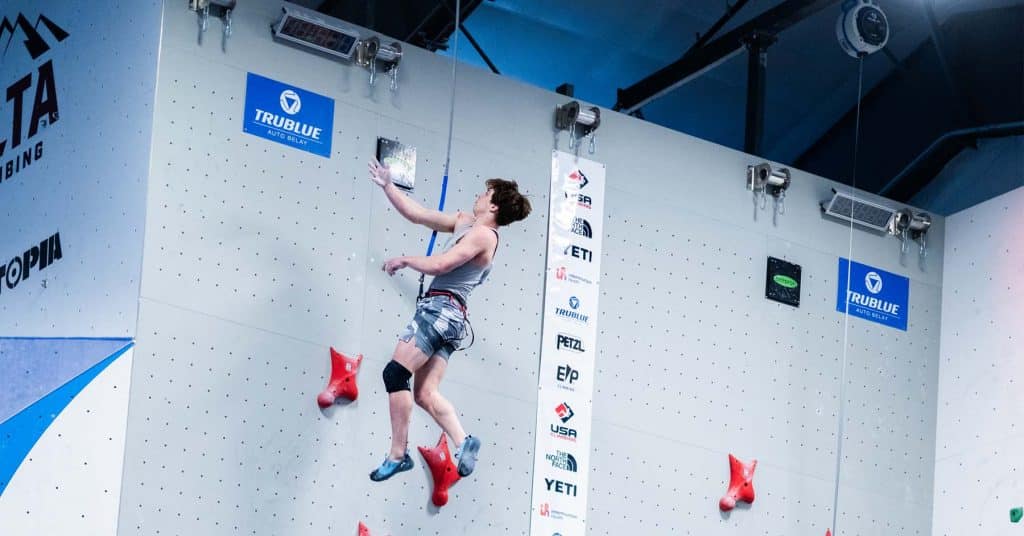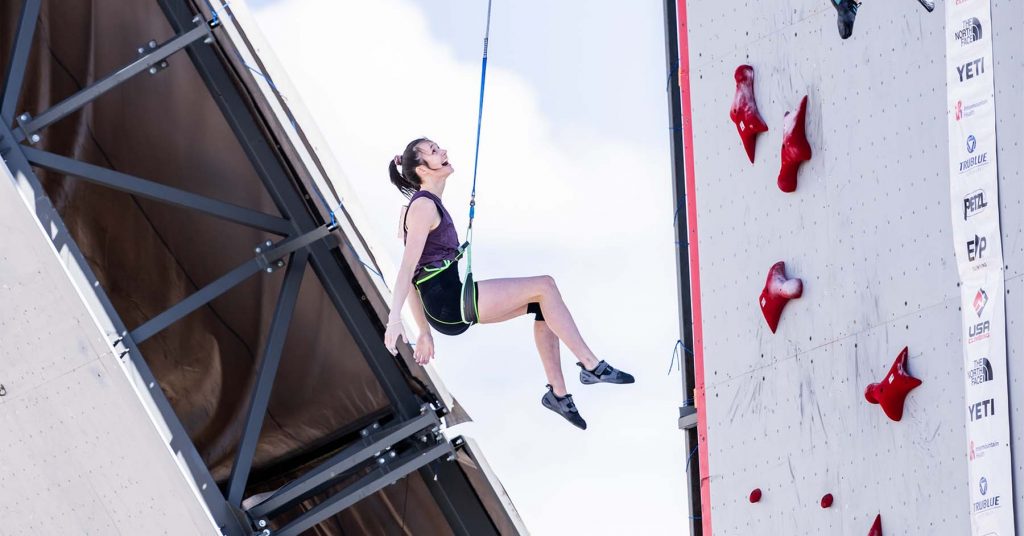Where does speed climbing fit into the Olympics?
In 1896 the International Olympic Committee held the first Summer Olympics in Athens, Greece. This was the modern-day return of the Ancient Olympic Games that took place between 776 BC - 393 AD. Only 14 nations took part in the 1896 games. Events included cycling, fencing, gymnastics, shooting, swimming, tennis, weightlifting, wrestling, and athletics. And while rock climbing was considered a sporting activity as far back as the 1920s (and even further depending on one's definition of a sporting activity), it wouldn't make its debut in the Olympics for another 100 years.
The 2020 Tokyo Olympics adds Men's and Women's Sport Climbing in a combined event comprised of three disciplines: lead, bouldering, and speed climbing, the100-meter dash of the climbing world.
Unlike typical climbing events, where climbers specialize in a single discipline, the Olympic committee has decided to evaluate each athlete's performance in every discipline. The climber with the best overall score from these three events will take home the climbing gold medal. It's rare for a climber to train and succeed in all three fields. It would analogous to having a long-distance runner suddenly compete in the 100-meter dash. As a result, speed climbing could have a significant impact on the outcome of the Olympic Games.
What is Speed Climbing
Speed climbing is a climbing discipline that pins two climbers against one another in an orchestrated dash to the top of a 5-degree overhanging, 15-meter wall (that's roughly 50 feet for the American fans out there) with 20 handholds and 11 footholds. The fastest climber to the top of the wall wins.
IFSC Standards
The International Federation of Sport Climbing (IFSC) is the organization that regulates and promotes climbing competitions around the world. The IFSC sets the standards for speed climbing and other climbing competition formats and determines which events are sanctioned for world record attempts.
This standardization allows the speed climbing results of one climber to be compared across the world and over time if the competitions are sanctioned. These sanctioned events are opportunities for a climber to challenge the existing world record. Speed climbing used to take place on routes that changed with each competition, but then the winner could only claim the fastest time for that one competition. There was no world record or even personal records because the route was unique every time.
While there is no official grade for the standardized speed climbing route, it is estimated to be around a 6b or 5.10a to 5.10c for those familiar with the Yosemite Decimal System. That grade means less when competitors are climbing as fast as possible. Elite climbers don't touch every hold and seem to fly up the wall instead of climb it. They have trained over and over on that route so that each individual move is memorized and can be executed as a reflex instead of a conscious action.
The Innovation Behind Speed Climbing
Timing
Events are timed using a pair of sensors, one pressure-sensitive pad at the bottom of the climb that activates the time, and one button at the top of the climb that stops the sensor. Without this tech, timing races would be nearly impossible because the difference between a win or loss can come down to a fraction of a second.
Belaying
The technology behind speed belaying is perhaps one of the most significant innovations supporting this discipline. When speed climbing first arrived on the competition scene, an army of belayers was needed to take up slack fast enough to keep pace with the speed climber. This method was inherently flawed. Not only was it questionable safe, but belay teams were also often accused of assisting climbers to the top and thus results were frequently challenged. Moreover, ropes used in friction devices were commonly shredded after just one competition — there had to be a better way.
Enter the auto belay. Starting in 2016, speed climbing auto belay devices — automatic belay systems designed to suck in webbing attached to the climber as they ascend upward — have all but replaced ropes for this discipline. And it’s easy to see how. Auto belays are fast, safe, and standardized, making them the ideal belay methods in a sport where 1/100ths of a second determines winners and records.
TRUBLUE Speed Auto Belays
The TRUBLUE Speed Auto Belay is engineered to maximize the retraction speed while still utilizing our patented magnetic eddy current braking for a gentle descent. The retraction time on the TRUBLUE Speed outpaces the IFSC standards and will be fast enough to outrun even the elite speed climbers of the world. The TRUBLUE Speed's retraction rate is 2.7 seconds for a 10m wall and 3.5 seconds for a 15m wall.
The eddy current braking technology used in Head Rush's TRUBLUE Auto Belays is also used in the TRUBLUE Speed Auto Belay. The eddy current brake technology is extremely reliable because it is friction-free, with no contacting parts in the braking system. The braking is smooth, low maintenance, and automatically adjusts to the climber's weight for a consistent experience across the widest weight range of any modular auto belay.
What does this mean for climbing?
In closing, gym owners may need to prepare for a new generation of speed climbers. If past Olympic games are any benchmark, with global audiences of over 3 billion people, this year’s Olympic games will likely inspire the next great speed climbing athlete. Who knows, maybe the climber that breaks the 5-second barriers will come out of your gym?
Interested in building a speed wall in your gym? Learn about TRUBLUE Speed to get started.



